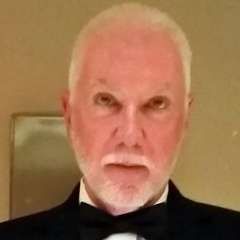Symphony orchestras' artistic planners often program a concerto sandwiched in between an overture and a symphony. For this week’s Atlanta Symphony Orchestra concerto, that formula was slightly adjusted in a most intriguing way, and the program provided a welcome opportunity to hear major works from the 18th, 19th, and 21st centuries. In addition, the program highlighted how a composer’s cultural heritage can influence his music output.
Michael Gandolfi’s 2015 Imaginary Numbers was born out of a commission to honor, in part, the composer’s friendship with ASO Music Director Robert Spano. Gandolfi is one of the most honored composers in the contemporary American classical music scene. He has won numerous prestigious awards and he is head of composition at the renowned New England Conservatory of Music. He is also a member of Spano’s “Atlanta School”, which is designed to perform the work of contemporary American composers – including Jennifer Higdon, Christopher Theofanidis, Osvaldo Golijov and Adam Schoenberg. One of the most important characteristics of the music of these composers is that it is often tonal, lyrical, and understandable at first listening.
Gandolfi’s Numbers is all of that and more. While the composer describes a program for the work, based on Descartes concept of imaginary numbers, it hardly matters, given that the music is lean, transparent, and fully American. Its lineage comes from Copland and Bernstein, among others, but does not include Americana. Rather its American roots are reflected in its exuberance, color, optimism, and power. The four-movement work features a flute, oboe, bassoon and French horn quarter – played here by ASO principal players – interacting with a large orchestra, similar to a concertante. The brass-heavy first movement includes complex fugal passages interspersed with lyrical sections. The second movement is more soloist-focused, providing an opportunity to hear some virtuosic performances. The third movement is darker, with a foreboding underscored by the rumble of the bass drum. The fourth, final movement is full of dramatic flourishes, with a driving snare drum plus a restrained use of percussion. This is a grand contemporary work, played masterfully by the four soloists and the ASO. A recording of this piece is to be released on the ASO label.
The program also included Bartók’s 1943 Concerto for Orchestra, another work that reveals a composer’s cultural heritage. Bartók wrote this work while in exile in the United States, having left his native Hungary to escape the war. Writing on different soil, however, did not cut the composer’s ties to the folk tunes of his native land, especially Magyar peasant melodies. He was, in fact, an ethnomusicologist who collected and studied the music of the Hungarian people, and his compositions contain numerous references and quotations of that music. The five-movement Concerto is like a symphony that features each section of the orchestra playing in soloistic and virtuosic style. Spano was at his best in conducting this work. His chosen tempi were nearly perfect: he carefully controlled the dynamics, thereby not losing control of the music’s power, and he coaxed remarkable transparency from the ASO. Fortunately, details in the music were not obliterated by exaggerated volume. The ASO musicians played to perfection, and the brass was especially burnished and controlled. This wonderful performance helps underscore why this work is considered a cornerstone of 20th-century Western art music.
The middle work on the program was Mozart’s Piano Concerto no. 25, with soloist Jeremy Denk. This concerto is considered to be a major work by this major composer, yet this performance was a bit underwhelming. There is no doubt that Denk has the required technical and musical expertise, and he connects well with the audience. At times he seemed almost in a trance while listening to the orchestra play, and his first movement cadenza was stunning in its clarity. His accents and precision spotlighted Mozart’s ability to explore a theme to near exhaustion. Yet, at times during this movement, Denk and orchestra were not exactly together, lending a precarious feeling to the performance. In addition, the sound of the ASO was dense, as if this was Mozart being performed in a Romantic style. Lightness and elegance were replaced with a thickness that did not fit well with Mozart’s classical aesthetic. These criticisms notwithstanding, the audience’s enthusiasm led Denk to play an encore of Donald Lambert's transcription of the Pilgrims' Chorus from Tannhäuser, which seemed to eventually morph into Wagner as played in the Gershwin style.
This performance demonstrated the dedication and enthusiasm that Spano brings to the performance of more contemporary works in the classical music canon. His focus on contemporary American composers is most appreciated.


